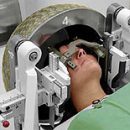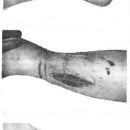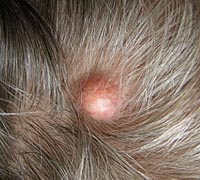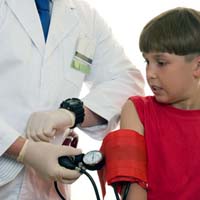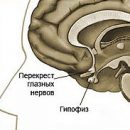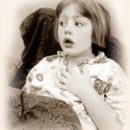Radiation therapy belongs to local treatment methods, as it affects only tumor cells in the area of irradiation. Radiation therapy usually applies with early tumor stages in order to cure the patient. In addition, this method can be used before the operation in order to reduce the size of the tumor or after surgery to prevent recurrence (return) of the disease.
Content
Radiation therapy
Rauchery therapy can be used to remove pain syndrome caused by tumor growth or metastases, for example, in the bones. With some tumors, radiation therapy is prescribed along with operation and chemotherapy.
In some cases, radiation therapy may be prescribed prophylactically without the existence of explicit signs of tumor growth, but when there is a high probability of disseminating the process into this area. An example is the irradiation of the head in patients with small-cell lung cancer, when the risk of brain damage is high.
Ionizing radiation is divided into two main types:
- Photons (X-ray and gamma rays)
- exposure to particles (electrons, protons, neutrons, alpha particles and beta particles)
Some types of ionizing radiation have greater energy compared to other. The higher the radiation energy, the deeper the rays penetrate into the tissue. For each particular patient, the method of radiation impact is elected.
The most frequent types of irradiation are the following:
- Photons of high energies from radioactive sources (cobalt, cesium) or linear accelerator.
- Electron beams for irradiation of superficial tumors.
- Proton irradiation - allows you to effectively affect the deeply located tumor, without damaging the tissues through which they pass.
- Neutron exposure - used for the treatment of tumors of the head, neck and prostate gland.
Complications of radiation therapy in adults
Radiation therapy refers to local types of treatment of radiation disease and its symptoms, so the side effects of irradiation occur, as a rule, in the field of radiation impact.
Early radiation damage can develop in a few days or weeks from the start of therapy and can continue within a few weeks after its completion.
Exposure can cause redness, pigmentation and irritation of the skin in the field of radiation impact. Typically, most skin reactions passes after the end of treatment, but sometimes the skin remains darker in color compared to normal skin.
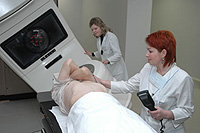 In patients receiving radiation therapy on the head and neck area, redness and irritation of the oral mucosa can be celebrated, dry mouth, difficulty swallowing, change in taste, nausea.
In patients receiving radiation therapy on the head and neck area, redness and irritation of the oral mucosa can be celebrated, dry mouth, difficulty swallowing, change in taste, nausea.
Less often occur pain in the ears and swelling. The irradiation of the scalp is accompanied by temporary baldness.
During the irradiation of the pelvic region, nausea, vomiting, chair disorders, degradation of appetite appear. In some cases, symptoms of irritation of the mucous membrane of the bladder are noted, which is manifested by discomfort and rapid urination.
It is necessary to know that radiation therapy can damage the fetus, so it is recommended to avoid pregnancy during exposure to the pelvic area. In addition, radiation therapy may cause cessation of menstruation, as well as itching, burning and dryness in the vagina.
Exposure in men can lead to a decrease in the number of spermatozoa and a decrease in their ability to fertilize.
Radiation therapy on the chest area can cause difficulty or pain when swallowing, cough and shortness of breath. Breast irradiation or this area may be accompanied by redness and pigmentation of the skin, pain and tissue edema.
Irradiation of the stomach or other abdominal organs often leads to nausea, vomiting, liquid chair.
In rare cases, local irradiation can affect blood formation, leading to a decrease in the number of leukocytes or platelets. Usually it occurs with the combined application of irradiation and chemotherapy.
Radiation therapy often causes increased fatigue, which can intensify in the process of irradiation. It is important to know that irradiation may be accompanied by emotional disorders in the form of depression, fear, irritability, feelings of loneliness and hopelessness.
These phenomena are temporary and pass independently, but in some cases medical or psychological assistance may be required.
Complications of radiation therapy in children
Rauchery treatment is one of the important components of the treatment of malignant tumors in children. The specifics of the children's body and the development of the tumor process define a number of features of radiation therapy and the occurrence of adverse reactions and complications.
The radial method as independently is rarely used in children. Usually irradiation is applied in the following cases:
- Preoperative irradiation in order to reduce tumor sizes.
- Postoperative irradiation aimed at the destruction of the remaining tumor cells after surgery or in case of incomplete (nera-color) tumor removal.
- Combination of radiation therapy with chemotherapy or operation.
The overwhelming number of malignant tumors in children are highly sensitive to irradiation. These include: Nephoblastoma (Wilms Tumor), Needoblastoma, Non-Hodgkinsky Lymphoma (Lymphosarcoma), Rabbiomiosarcoma, Sarcoma, Yinga, Hodgkin's disease (lymphranulomatosis).
At the same time, the sensitivity of the same tumor in different patients to radiation therapy is not the same. It depends on the nature of the growth of the tumor, its size, the duration of the existence of concomitant diseases and other factors.
Conducting radiation therapy is difficult in young children due to the need for immobility of the patient during irradiation. Exposure in such cases is carried out during sleep, both natural and caused by the use of special means.
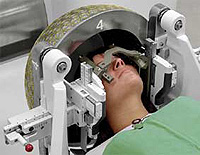 Considering the high sensitivity of children, especially young children, to radiation, large volume of irradiated tissues, the severity of the child's condition, can expect the appearance of side effects. Radiation therapy is often accompanied by nausea and vomiting (when irradiated abdomen and other areas), as a manifestation of a common radiation reaction.
Considering the high sensitivity of children, especially young children, to radiation, large volume of irradiated tissues, the severity of the child's condition, can expect the appearance of side effects. Radiation therapy is often accompanied by nausea and vomiting (when irradiated abdomen and other areas), as a manifestation of a common radiation reaction.
Side manifestation of local irradiation can be baldness, damage to the mucous membrane of the oral cavity (stomatitis), intestinal disorders in the form of a liquid chair, especially in young children. Often there are other adverse reactions of a general nature (loss of appetite, sleep disorder) and deterioration of blood indicators (decrease in the number of leukocytes and red blood cells).
When a significant total dose of irradiation is reached, pronounced local skin reactions are possible (redness, moisture, itching, pain).
Dactinomycin chemotherapy products, and adreamicine enhance the lesion of the skin and mucous membranes; Cyclophosphamide in combination with irradiation often leads to the Catestone (bladder inflammation), and adriamycin when irradiating the mediastinum increases cardiotoxicity (damage to the heart muscle).
From late complications of radiation therapy It should be noted atrophy of the skin, subcutaneous tissue and soft tissues, the insertion of lymphatic vessels with the development of edema, slowdown in the growth and deformation of the bones, shortening the irradiated limb, asymmetry of individual parts of the body, osteoporosis (bone resolution) and pathological fractures.
It is also possible to appear scar changes in the lungs, the defeat of the heart muscle, cataracts, etc. The severe consequence of radiation therapy in a few years (2-10 or more years) is the development of a second malignant tumor.

